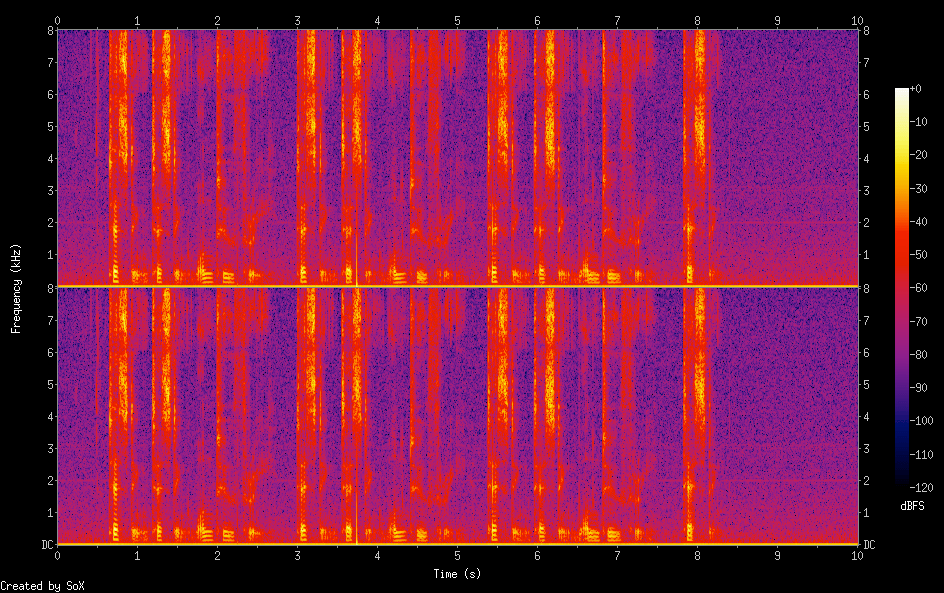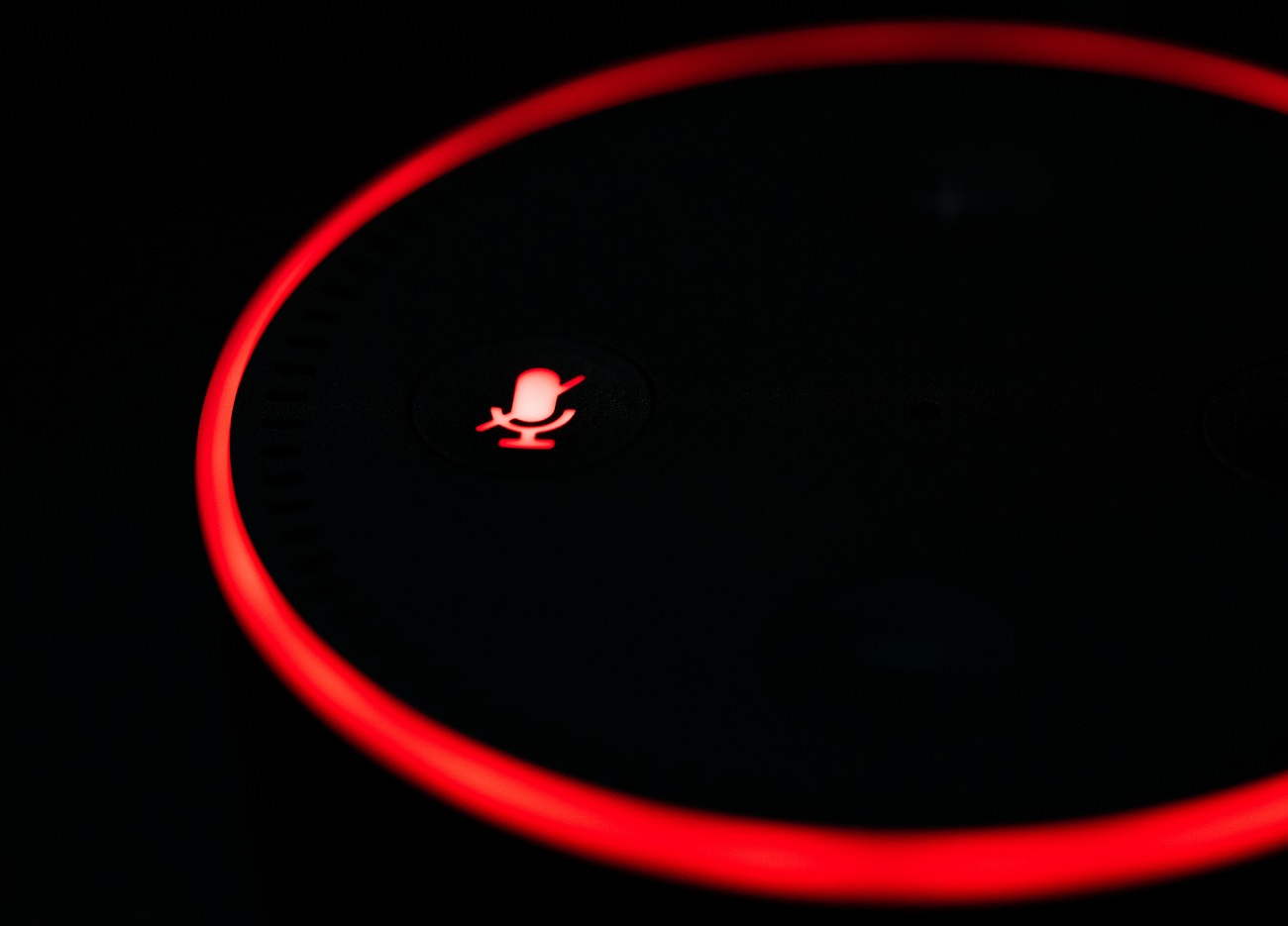At the IT-festival SXSW, the world's first “gender-neutral” voice assistant is introduced.
A virtual assistant was introduced to SXSW , whose voice doesn’t sound like neither female nor male. We tell how it was created and look at the prospects.

Photo by Gareth Halfacree / CC BY-SA
According to research, users of smart speakers and voice assistants do not have enough “neutral” voice option without pronounced female or male features. In the Space10 R & D survey, almost half of the 12,000 respondents would prefer to hear the “asexual” voice of an assistant. In this performance, people associate it better with AI systems hidden under the hood of an assistant. Neutral voice more suited to the image of "car". However, there is no such option for large players in this market.
')
The solution was offered by the experts of the agency Virtue - at the SXSW conference in Austin they presented a new “asexual” voice assistant called Q. It was developed jointly with the non-profit organization Equal AI, interactive studios thirtysoundsgood and Koalition Interactive, as well as linguistic experts.
To create a new assistant, the voices of five people were “united” into one. The final "voice" was given to listen to potential assistant users from different European countries - people had to evaluate on a five-point scale how much it looks like a woman's. In accordance with the results of testing, the voice was corrected — made lower or higher — after which it was again allowed to listen to users.
The iterative work with a focus group of four and a half thousand respondents led the authors of the project to a “neutral” voice.
You can listen to the assistant sounds in the video at this link , as well as on the project website .
Journalists speak positively about the Q project. According to CNBC's columnist, the assistant sounds quite “confident”, but it also seems friendly and responsive. The authors of the project also spoke about the prospects of the assistant. They believe in the success of the idea, because Q expands the possibilities of choice for users of smart speakers and voice assistants.
Developers do not plan to launch their own device or application, but want to attract the attention of IT companies and invite them to add a neutral voice for their assistants. The plans of the creators of Q - tell your transport companies, government and other organizations that use voice ads.
However, while the future of the project remains unclear. No technology company has yet announced a desire to work with the creators of Q, and perhaps after the noise in the technological media, the gender-neutral assistant will be developed by the IT giants on their own.
In the field of voice assistants, there are no analogs of Q yet. However, the ability to choose the "gender" of the voice is already in all significant projects in this area. For English-speaking users in the Google Assistant there are ten different male and female voices, and in Siri, a male and female voice with different accents. You can also change the sound in Amazon Alexa - different voices are available in the “skills” of the smart speaker.

Photo by Tony Webster / CC BY-SA
Q analogs can be found in the chat bots area. One of the first "gender-neutral" bots was developed by the British company Sage - it was named Pegg. According to the project manager, Kriti Sharma (Kriti Sharma), the assistant was made “sexless” to create for him the identity of a bot, not “a bot pretending to be human .”
“Neutral” chat bots are also being developed for GoDaddy and Lowe's chain stores — both bots will be used in customer service.
Although the creators of smart speakers and helpers expand the range of voices available, the assistant’s “default” sound remains unchanged. According to the Slate edition , such consistency can be associated with brand awareness - if the assistant’s voice changes dramatically, it will cause a negative reaction from users who are used to distinguishing between different services by ear.
Most likely, the "neutral" voices will not become the generally accepted standard in the market of large voice assistants. However, the popularity of such solutions among users may lead to the emergence of new players who can offer a wide variety of images of virtual assistants.
Additional reading about sound and music from our blog and Telegram channel:
 As the trees and other plants say
As the trees and other plants say
 How to turn graphics into sound, and why?
How to turn graphics into sound, and why?
Go Record and edit podcast
Record and edit podcast
Go What are the features and objectives of sound games
What are the features and objectives of sound games

Photo by Gareth Halfacree / CC BY-SA
Why do we need a “gender-neutral” voice
According to research, users of smart speakers and voice assistants do not have enough “neutral” voice option without pronounced female or male features. In the Space10 R & D survey, almost half of the 12,000 respondents would prefer to hear the “asexual” voice of an assistant. In this performance, people associate it better with AI systems hidden under the hood of an assistant. Neutral voice more suited to the image of "car". However, there is no such option for large players in this market.
')
The solution was offered by the experts of the agency Virtue - at the SXSW conference in Austin they presented a new “asexual” voice assistant called Q. It was developed jointly with the non-profit organization Equal AI, interactive studios thirtysoundsgood and Koalition Interactive, as well as linguistic experts.
How Q Assistant Works and How It Was Created
To create a new assistant, the voices of five people were “united” into one. The final "voice" was given to listen to potential assistant users from different European countries - people had to evaluate on a five-point scale how much it looks like a woman's. In accordance with the results of testing, the voice was corrected — made lower or higher — after which it was again allowed to listen to users.
The iterative work with a focus group of four and a half thousand respondents led the authors of the project to a “neutral” voice.
According to the developers, the sound of Q seems to people "asexual", because the voice of the assistant lies in the frequency range between male and female voices. For the former, the frequency spectrum is 80–180 Hz, and for the latter, 140–255 Hz. Q voice falls in the neutral range of 145–175 Hz, which does not allow one to unambiguously determine the sex.
You can listen to the assistant sounds in the video at this link , as well as on the project website .
Opinions and potential
Journalists speak positively about the Q project. According to CNBC's columnist, the assistant sounds quite “confident”, but it also seems friendly and responsive. The authors of the project also spoke about the prospects of the assistant. They believe in the success of the idea, because Q expands the possibilities of choice for users of smart speakers and voice assistants.
Developers do not plan to launch their own device or application, but want to attract the attention of IT companies and invite them to add a neutral voice for their assistants. The plans of the creators of Q - tell your transport companies, government and other organizations that use voice ads.
However, while the future of the project remains unclear. No technology company has yet announced a desire to work with the creators of Q, and perhaps after the noise in the technological media, the gender-neutral assistant will be developed by the IT giants on their own.
Who else is developing asexual assistants
In the field of voice assistants, there are no analogs of Q yet. However, the ability to choose the "gender" of the voice is already in all significant projects in this area. For English-speaking users in the Google Assistant there are ten different male and female voices, and in Siri, a male and female voice with different accents. You can also change the sound in Amazon Alexa - different voices are available in the “skills” of the smart speaker.

Photo by Tony Webster / CC BY-SA
Q analogs can be found in the chat bots area. One of the first "gender-neutral" bots was developed by the British company Sage - it was named Pegg. According to the project manager, Kriti Sharma (Kriti Sharma), the assistant was made “sexless” to create for him the identity of a bot, not “a bot pretending to be human .”
“Neutral” chat bots are also being developed for GoDaddy and Lowe's chain stores — both bots will be used in customer service.
findings
Although the creators of smart speakers and helpers expand the range of voices available, the assistant’s “default” sound remains unchanged. According to the Slate edition , such consistency can be associated with brand awareness - if the assistant’s voice changes dramatically, it will cause a negative reaction from users who are used to distinguishing between different services by ear.
Most likely, the "neutral" voices will not become the generally accepted standard in the market of large voice assistants. However, the popularity of such solutions among users may lead to the emergence of new players who can offer a wide variety of images of virtual assistants.
Additional reading about sound and music from our blog and Telegram channel:
 As the trees and other plants say
As the trees and other plants say How to turn graphics into sound, and why?
How to turn graphics into sound, and why?Go
 Record and edit podcast
Record and edit podcastGo
 What are the features and objectives of sound games
What are the features and objectives of sound gamesSource: https://habr.com/ru/post/444002/
All Articles